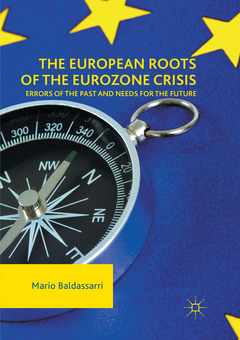Description
The European Roots of the Eurozone Crisis, 1st ed. 2017
Errors of the Past and Needs for the Future
Author: Baldassarri Mario
Language: English
Subject for The European Roots of the Eurozone Crisis:
Publication date: 08-2018
Support: Print on demand
Publication date: 10-2017
Support: Print on demand
Description
/li>Contents
/li>Biography
/li>Comment
/li>
This book examines the Eurozone crisis in light of theoretical and empirical evidence. The first half explores specific theoretical contributions within a framework of growth theory models to examine the two major pillars of the European construction, the European Central Bank and the Maastricht Treaty, and seeks to explain why they are theoretically wrong. The second half presents results of counterfactual simulations using the Oxford Econometric model and estimates what the Eurozone has lost in terms of economic and social cost from 2002 to 2014 as a consequence of the super-evaluation of the Euro and the Maastricht Treaty parameters being mistakenly fixed and pursued. Finally, the author supports the urgent need to refund the European Union, up-dating The Maastricht Treaty and the ECB statute to build three concentric circles: the USE (United States of Europe), the EU (European Union), the EAFTDA (Europe/Africa Free Trade and Development Area).
Mario Baldassarri is Professor Emeritus of Economics at Sapienza University of Rome, Italy. He was member of the Italian Government as Vice-Minister of Economy and Finance (2001-2006), Senator of the Italian Republic (2006-2013) and Chairman of the Permanent Senate Commission in Finance and Treasury (2008-2013). This book complete a trilogy about World Economy and Europe together with two other previous books: The World Economy toward Global Disequilibrium and How to reach full employment and high growth in Europe. He is also Editor of Quo Vadis: World Economy and Institutions at a Cross-roads and of the series Central Issues on Contemporary Economic Theory and Policies.
Clearly outlines how traditional models can be applied to contemporary issues, institutions and problems
Explains how recent crises are related to long-term problems related to the European Union's foundational treaties and the nominal appreciation of the exchange rate of the Euro
Provides unique empirical analysis that reveals the two "mistakes", between 2002 and 2014, that have reduced the GDP of the Euro area by about 15% and produced a total employment loss of almost 13 million jobs




